- Show search

Virtual Field Trips
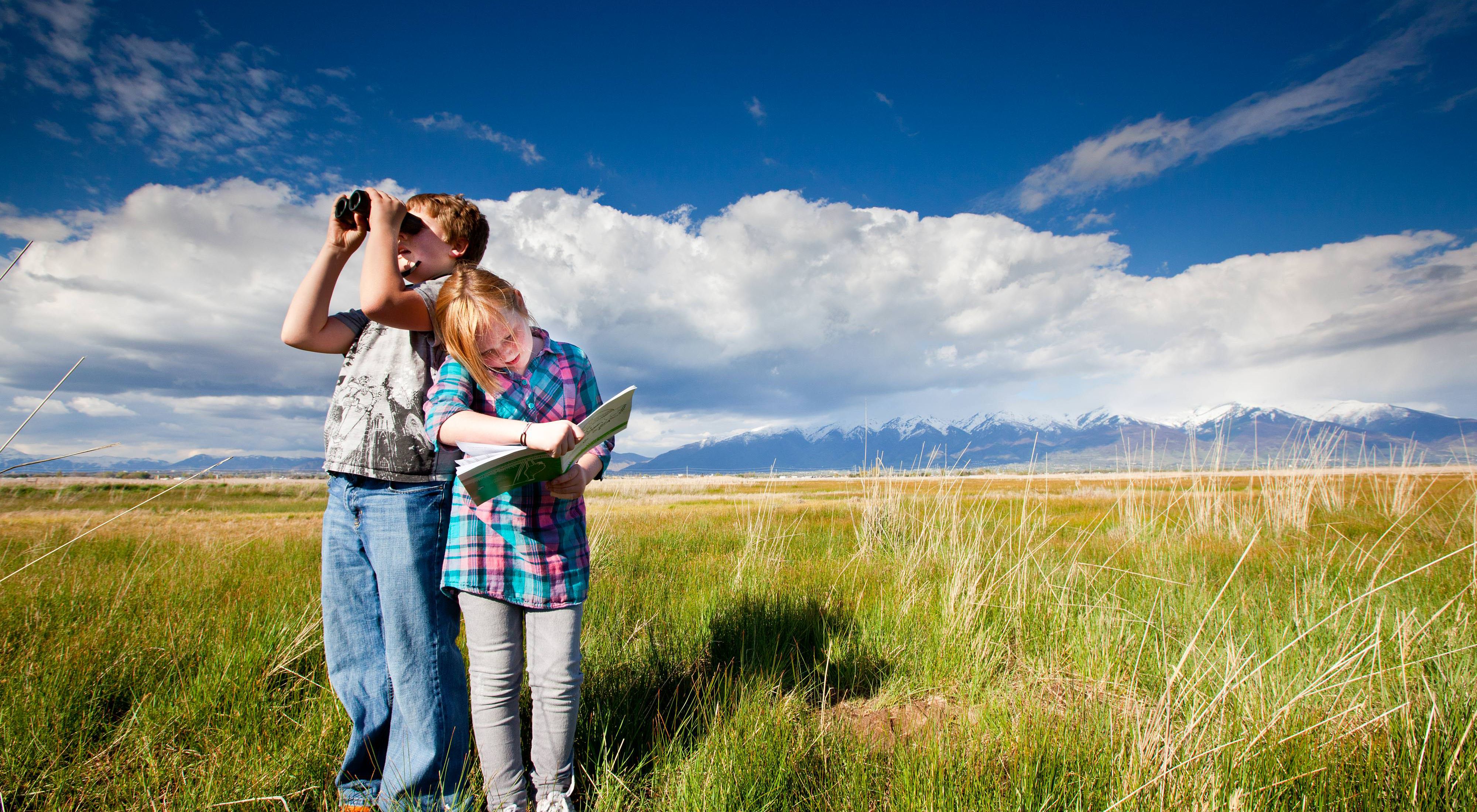
Explore the World with Virtual Field Trips
Designed for ages 9-15 but customizable for all ages, virtual field trips allow students to travel the world and explore natural environments without leaving the classroom. Each virtual field trip contains a video, teacher guide and student activities.
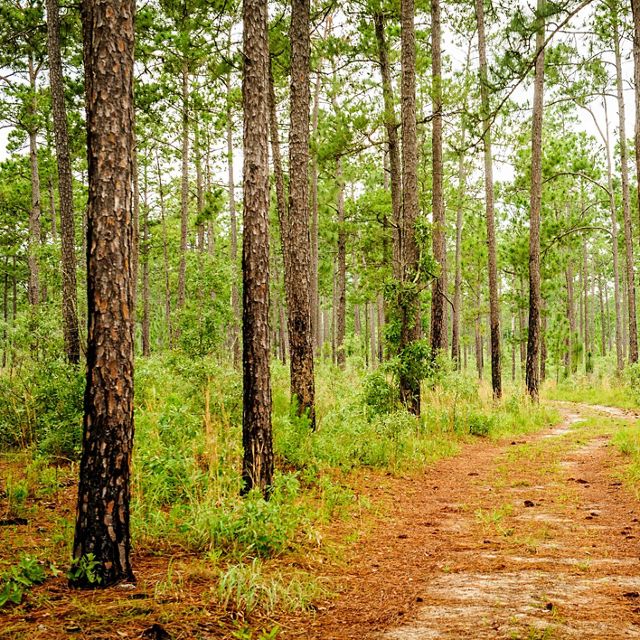
Working Trees: Reforestation and Responsible Forestry
Forests represent a powerful opportunity to pull carbon dioxide out of the atmosphere, helping to cool our planet while also providing clean air, clean water, and habitat for wildlife.
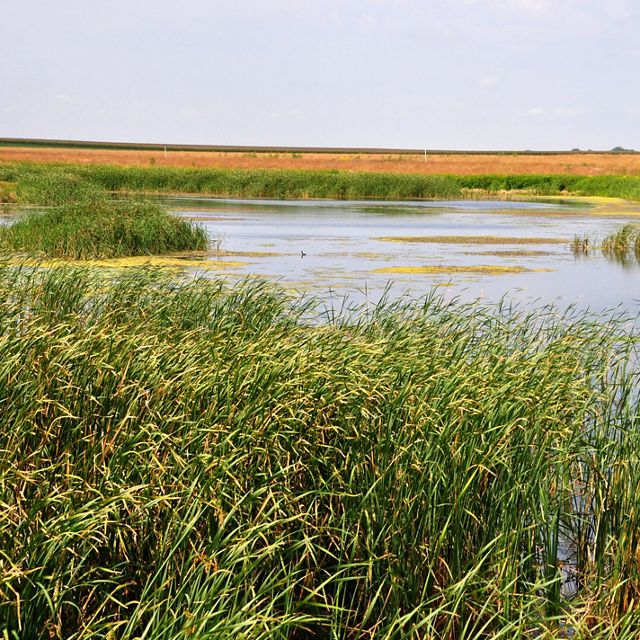
Less Harm on the Farm: Regenerative Agriculture
Food is more than something we eat to survive; it's a part of how we thrive. Learn how regenerative agriculture can help us feed a growing population while restoring nature.
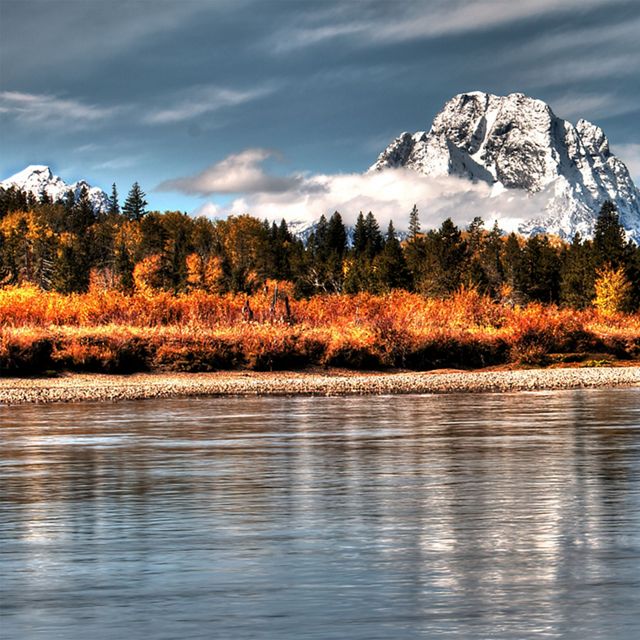
Climb-It Change
Explore how climate change is impacting alpine ecosystems and go on a climbing adventure with scientists who take you to some of the most stunning mountain ranges in the United States. This film is a Rocket Soul Studios production.
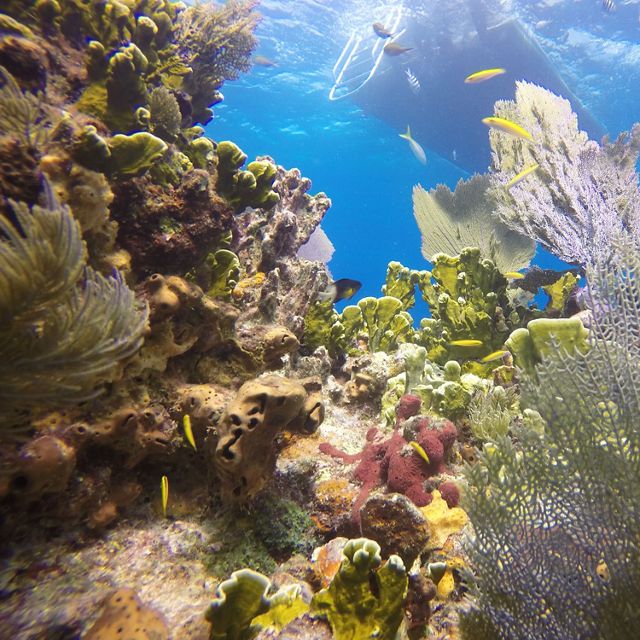
Protecting Our Oceans and Ourselves
More people rely on our ocean for food, energy, transport, recreation and other natural resources than any other time in history.
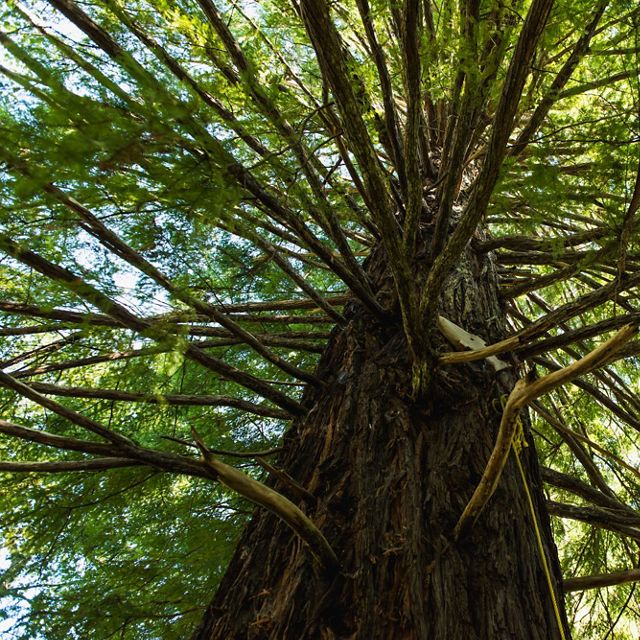
Climate Heroes: The Power of Trees
Trees are our climate superheroes! From Louisville, Kentucky, in the United States to St. Vincent and the Grenadines in the Caribbean, trees are playing critical roles in cleaning our air and improving our resilience in the face of climate change.
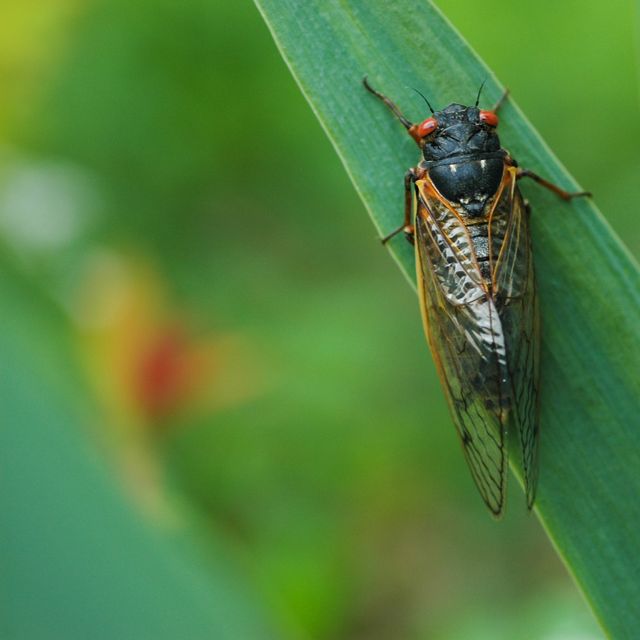
You’re the Scientist! Citizen Science, Frogs and Cicadas
The conservation community relies heavily on volunteers not only to restore natural areas but to help gauge the success of restoration efforts.

Changing Climate, Changing Cities
Get a front-row, ground-level seat to the challenges cities face as they confront this force of nature, and discover the solutions experts are promoting to mitigate it.
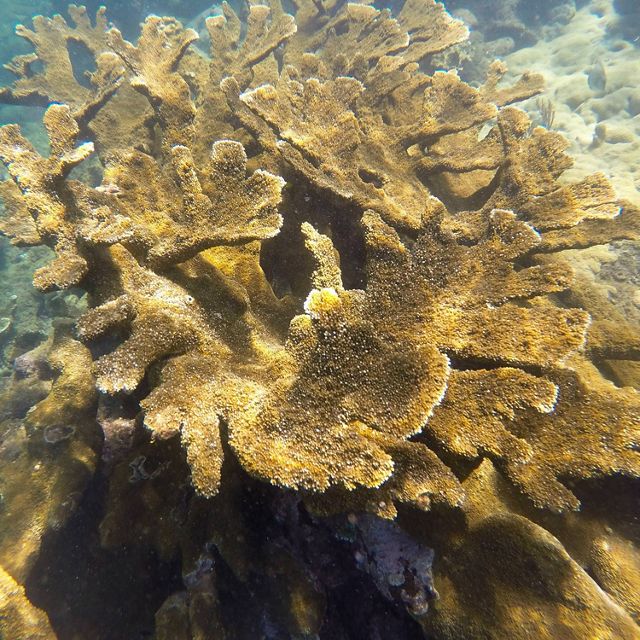
The Secret Life of Corals
Learn how fragile reefs are being damaged by human activity and climate change, and how scientists are developing ways to restore corals.
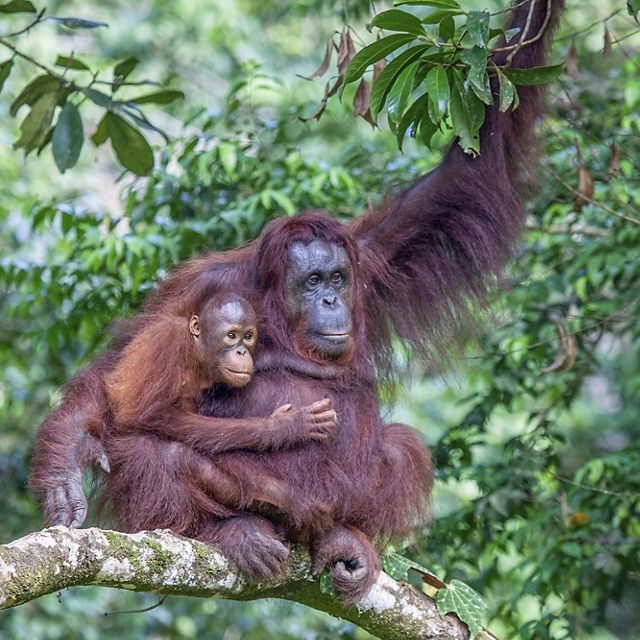
Borneo: The Symphony of the Rainforest
On this journey, we’ll learn how experts are using cutting-edge science to find out how healthy the rainforest is—and to discover where it needs some help!
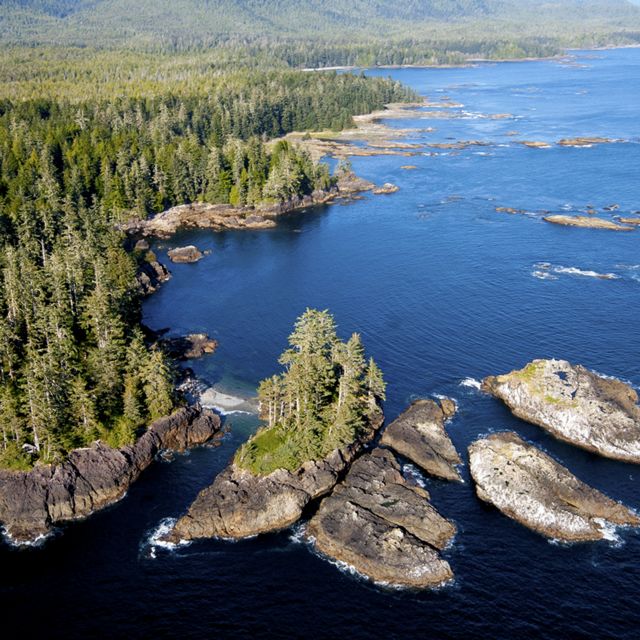
View from a Canoe
Can you imagine a place with 100 million acres of forest and 30,000 miles of coastline? It exists. The Emerald Edge is home to the largest intact coastal temperate rainforest.
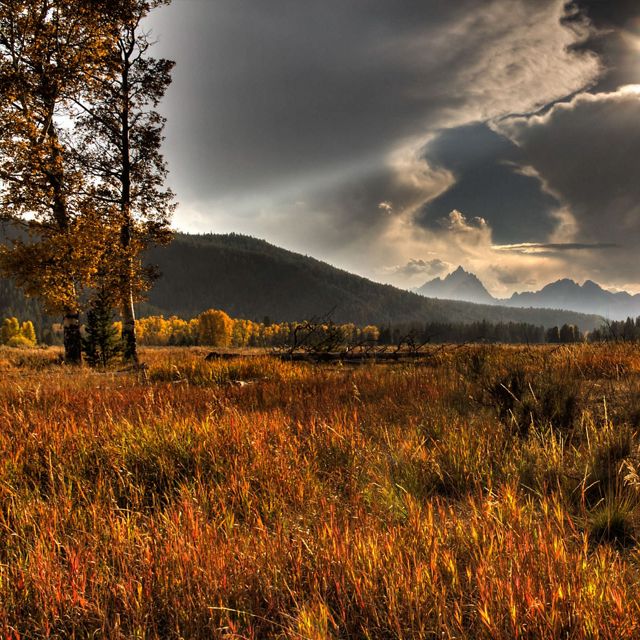
Wild Biomes: America’s Rainforests & Deserts
Two wildly different ecosystems, both dependent on the same precious resource: Water. On this virtual field trip, we’ll travel to Seattle and Arizona.
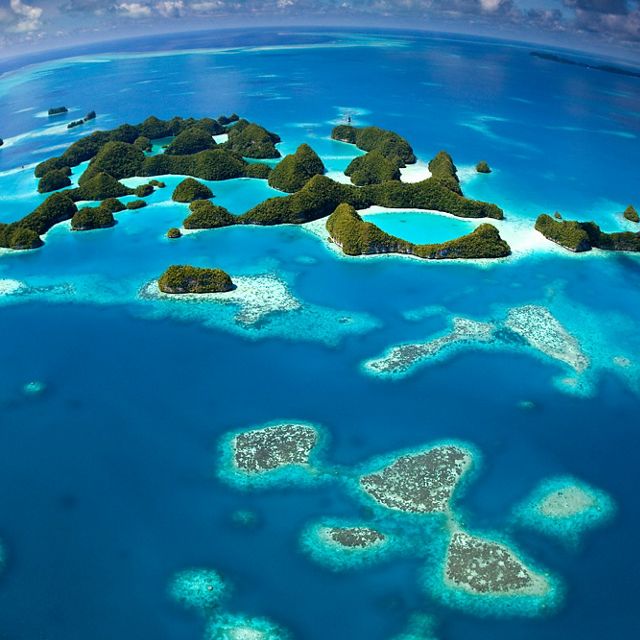
The Coral Reefs of Palau
Join our expert scientist, marine biologist Stephanie Wear, on a virtual field trip to the coral reefs of Palau where you'll explore amazing underwater cities.
.jpg?crop=669%2C0%2C2662%2C2662&wid=640&hei=640&scl=4.159375)
China’s Great Forests
Join our expert scientist Yue Wang, a conservation planning officer for The Nature Conservancy, on a virtual field trip across the world to two stunning provinces in China.
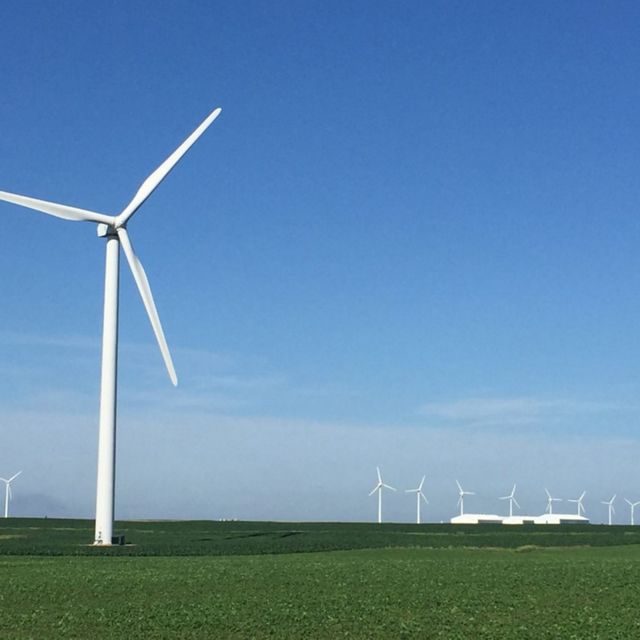
Powering the Planet: Renewable Energy
Join scientist Alex Wegmann as we embark on a Virtual Field Trip to explore a compelling question: How can we get the energy we need without harming nature?
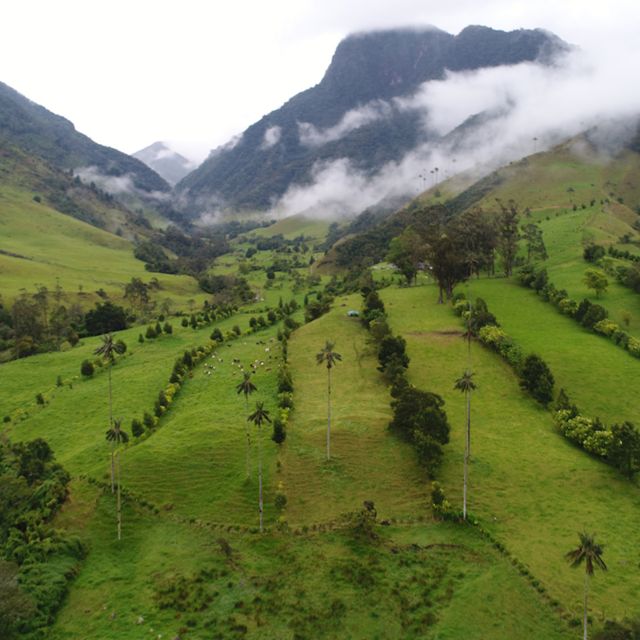
Journey of Water: Colombia’s Páramo
In this virtual field trip, we will explore the magical páramo ecosystem and the stunning mountain landscapes found just beyond the capital city of Bogotá.
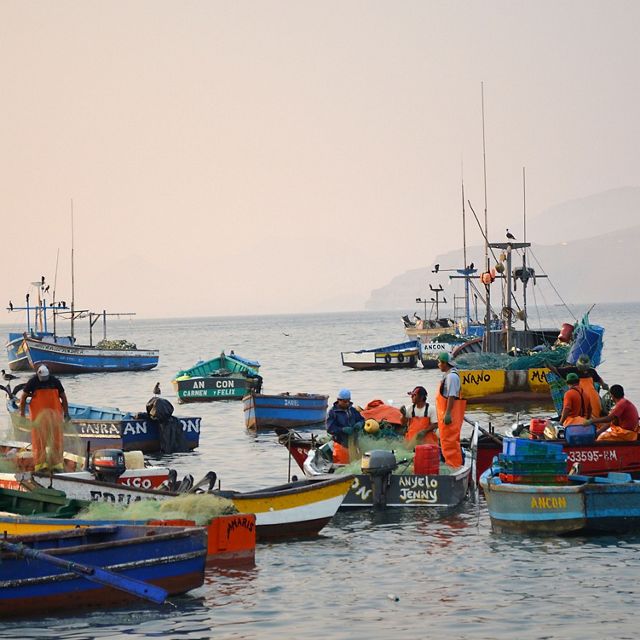
Peru: A Coastal Ecosystem
Join fisheries scientist Matias Caillaux to explore the Humboldt Current Ecosystem off the coast of Peru while learning about the area’s amazing diversity and productivity.
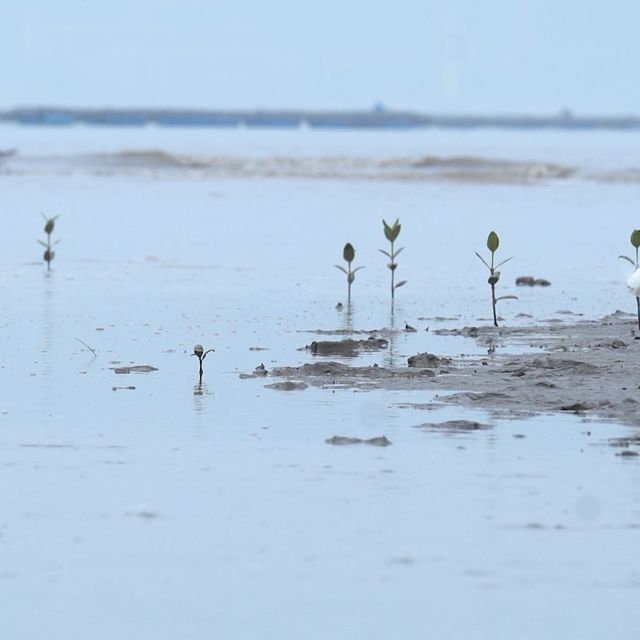
Ridge to Reef: A Virtual Field Trip to Hong Kong
The “Ridge to Reef” (R2R) concept is a holistic approach that takes into consideration all the environments within a watershed — from the top of the mountains down to the ocean — and shows that what happens on land affects what happens in the water.
Stay connected for the latest resources from Nature Lab
Don't miss new Nature Lab teaching guides and videos. Sign up to get the monthly Nature Lab newsletter with free environmental education materials for educators and families.
Explore Our Youth Curriculum
Access resources aligned to The Nature Conservancy’s research and designed specifically for a young audience and classroom use.
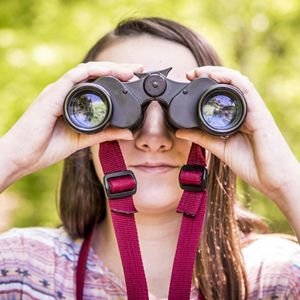

Smithsonian Environmental Research Center
Understanding ecosystems for a sustainable future, search form.
Visitors: The SERC campus is open Monday-Saturday, 8:00am-5:30pm. We're closed Sundays and federal holidays. Please do a health self-check before arriving, and stay home if feeling sick. Read Plan Your Visit for information on where to park, updated maps and hours, safety, and more.
Our trails are closed due to downed debris from a recent storm. For your safety, please do not hike the trails until further notice. We appreciate your patience while we work to clear the debris.
In the event of a government shutdown, SERC will remain OPEN for our normal Monday - Saturday hours through at least Saturday, October 7, by using prior year funds. Visit si.edu for updates.
The Reed Education Center is back open! Parking is available in the paved lot in front of the building. Please watch your step as you walk around the building - Remnant construction debris may be present.
Read Plan Your Visit for information on where to park, updated maps, safety, and more. Find out when to visit the Woodlawn History Center .
- Strategic Goals
- Advisory Board
- Corporate Leaders Program
- Director's Letter
- SERC Newsletter
- SERC Newsletter Signup
- Research Topics
- Laboratories
- Publications
- Research Around the Globe
- Coastal Carbon Network
- Ecological Genomics Core
- Technology in Ecology
- Environmental Data
- National Ballast Information Clearinghouse
- On-site School Programs
- On-site Group Programs
- Volunteer in Education
- Professional Development & Science Courses
- Learning Resources
Virtual Field Trips & Talks
- Job Opportunities
- Visiting Scientists and Research Associates
- Internships and Fellowships
- Plan Your Visit
- Calendar of Events
- Maps and Trails
- SERC Tours & Events
- Evening Lectures
- Woodlawn History Center
- SERC Fact Sheet
- Find an Expert
- Image Gallery
- News Releases
- SERC In The News
- Smithsonian Statement on Responding to Climate Change
- Science Writing Internships
- Why Do We Call It Participatory Science?
- Volunteer Projects
- Annual Reports
- Sign Up For The Email List
- Shorelines Blog
- SERC YouTube Channel
- Meeting Spaces & Housing
Education Menu
Smithsonian Health Connections & River Otters
Movement of life: sharks and rays, environmental literacy: forest ecology & climate change, environmental literacy: marine ecology.
- Get Involved
- Participatory Science
SERC Education Department
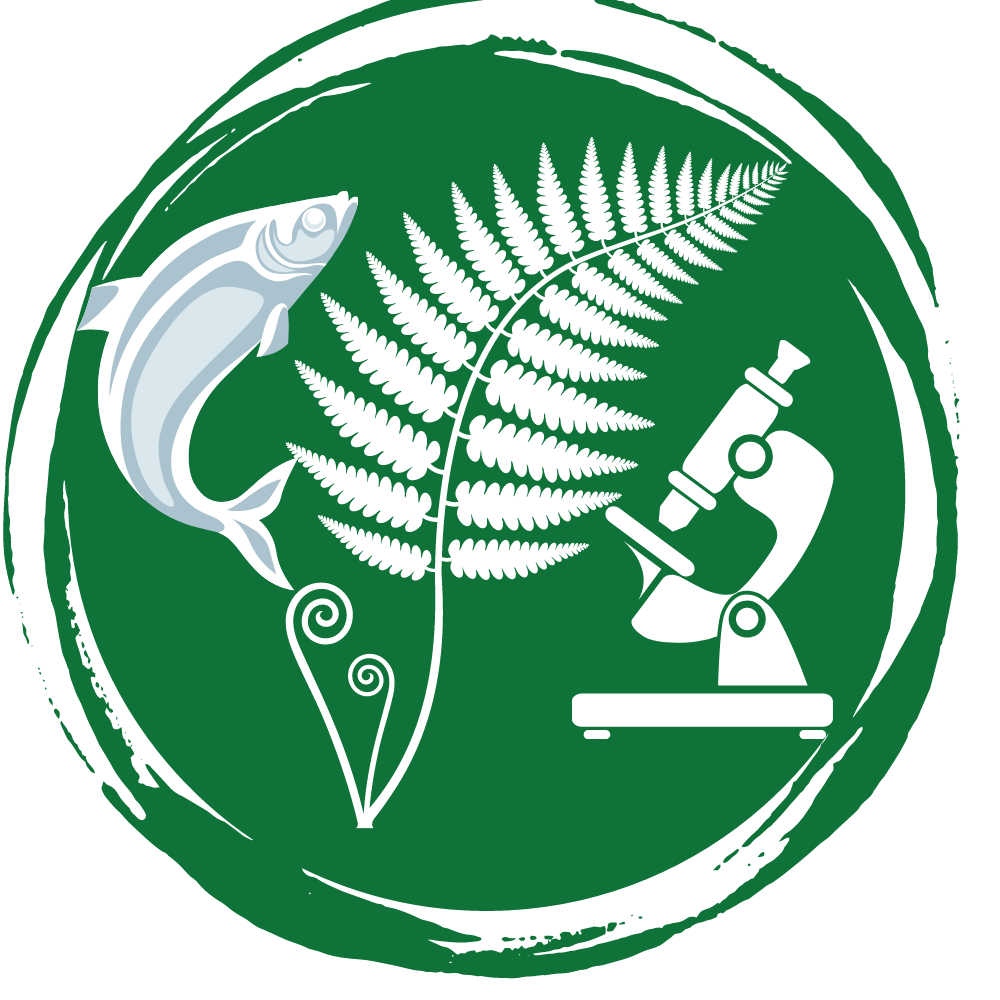
Virtual Programs For Schools and Groups
SERC’s new classes include offerings for students and teachers, and provide a variety of opportunities and formats for learning and teaching. All programs are designed to be stand-alone, but many can be used together to build content, knowledge, and understanding. Most programs can be adapted for a variety of ages and to fit the needs of your group.
Our Environmental Literacy (eLit) series focuses on current topics related to better understanding our world and SERC’s research in ecology, biology, chemistry, and science. Costs vary, but the basic rates are below. All classes align with NGSS standards.
Types of Program Offerings
Program topics.

Explore scientific research techniques and bring real-world science into your classroom with fun hands-on learning.

Learn how scientists track and follow animals that visit the Chesapeake Bay, and learn how you can track the migration and movement of life around your location!

Learn how to use leaves to study climate change and get an introduction to the Native Orchids of Maryland and the orchid-gami 3D models.

Introduce your students to the superpowers of plankton and river otter food webs!
Please remember, for a virtual program, you need:
- A reliable internet connection
- A laptop or computer
- A computer camera, microphone, and speakers
- A projector (as needed)
- The ability to do a Zoom conference or call-in
For more information, or to book a program, contact Karen McDonald at [email protected] .

Science Videos
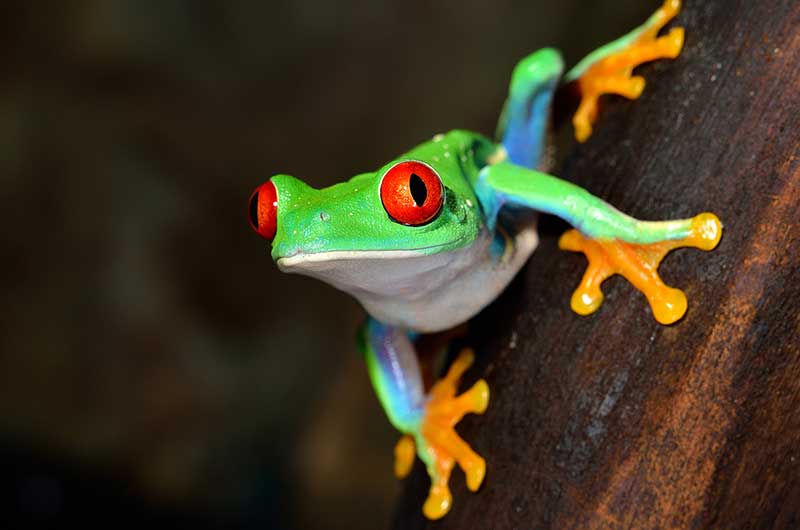
The Amazon Rainforest
Introduce your students to the layers of the rainforest and the many animals who live there. Explore the adaptations that have evolved over time to make for a successful existence of life in the rainforest.
Video length: 18:42 minutes.
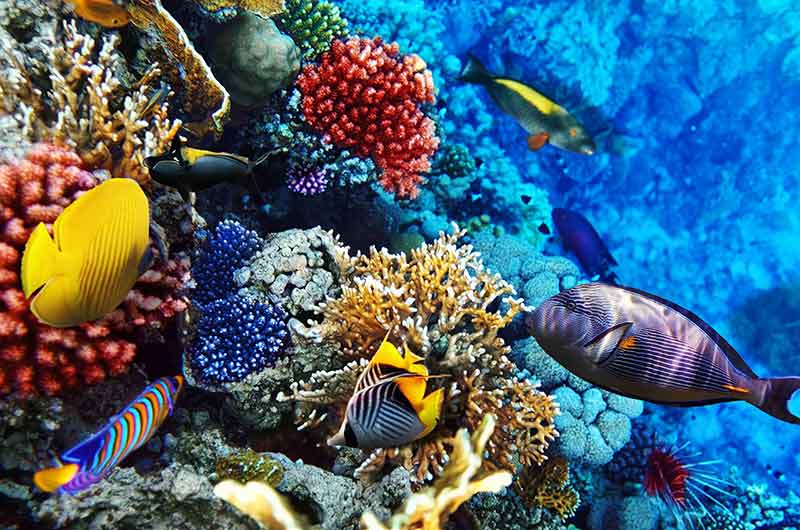
How Coral Reefs Are Formed
Explore the underwater world of coral reefs. Here, in Part 1, we’ll find out how coral reefs are formed over time. Learners will be able to see how a tiny coral polyp can create structures large enough to be seen from space. They will also begin to appreciate the diversity of life that exists in coral reefs around the world.
Video length: 13:20 minutes.
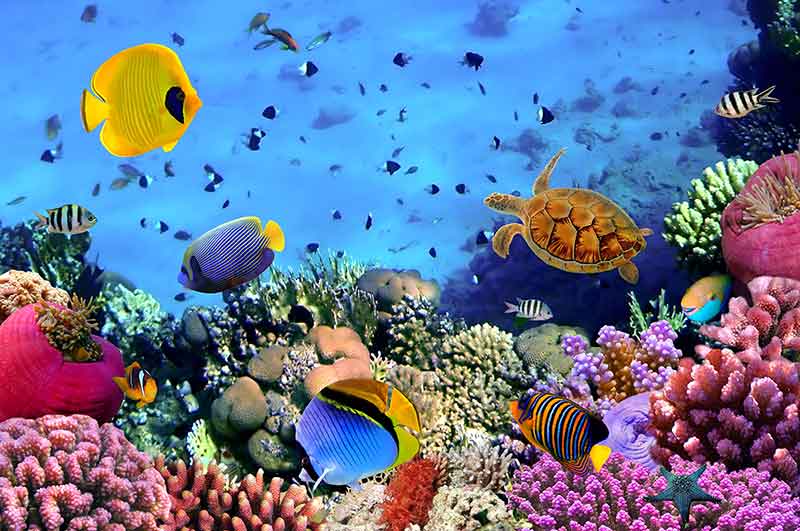
Who Lives On A Coral Reef?
Life on a coral reef is both bizarre and beautiful! Let’s get a first-hand look at the neverending roles of predator and prey. Introduce vocabulary such as adaptations, camouflage, symbiotic, and nocturnal. Lastly, students will be highly entertained by the remarkable array of animals that call a coral reef home.
Video length: 15:55 minutes.
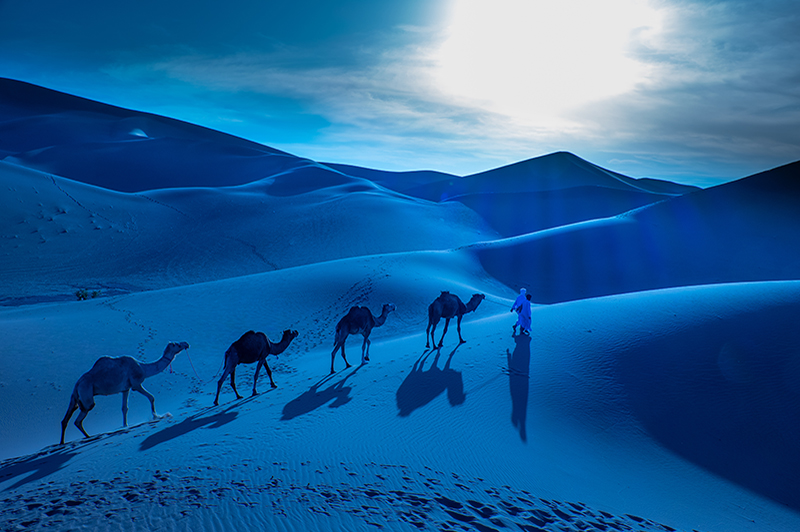
Sahara Desert
Welcome to the Sahara Desert – the largest hot desert in the world! We cover the climate and landforms of the Sahara and then move on to meeting the many insects, birds, reptiles, and mammals that live in these harsh conditions. Find out about the many adaptations that allow plant and animal life to survive and thrive here, along with the people who have called the Sahara home for many millennia.
Video length: 31:30 minutes.
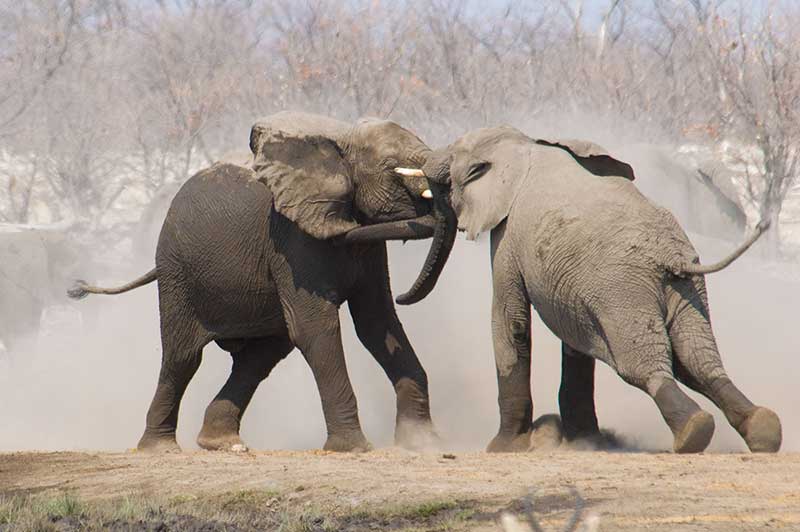
African Safari
Enjoy a trip through an African Safari park to see an incredible variety of wildlife. Take a first-row seat at the waterholes where the action is. You’ll see elephants, giraffes, warthogs, rhinos, zebras, lions, and so much more.
Video length: 15:15 minutes.
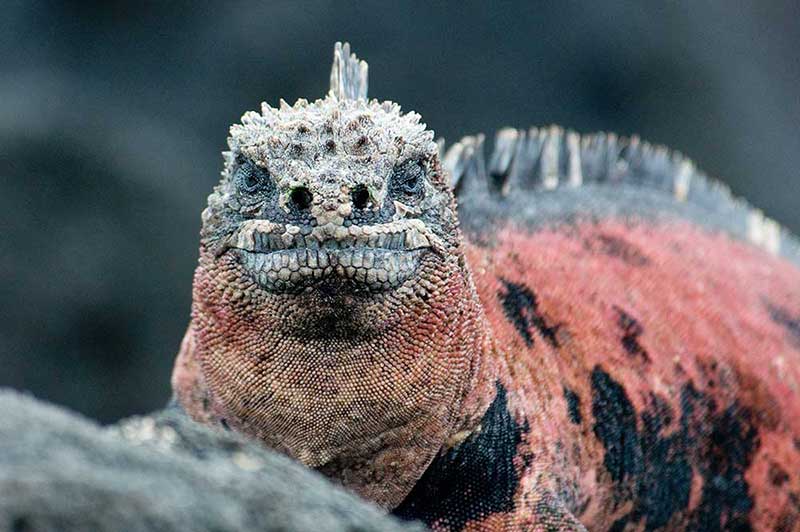
Galapagos Islands
Utterly unique and enchanting, the volcanic Galapagos Islands provide a captivating zoological adventure unlike any other. Marine Iguanas grazing from the sea floor, Vampire finches, giant tortoises and many other animals provide fascinating insights into adaptation and survival in this harsh and otherworldly environment.
Video length: 27:05 minutes.
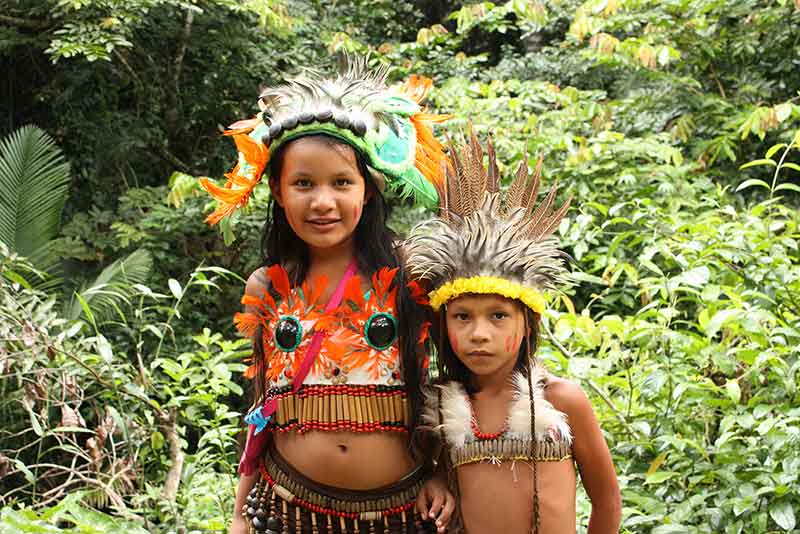
Amazon Rainforest: People & Threats (Grades 2-5)
Meet the people who have called the Amazon rainforest home for centuries. Learn about the threats facing all who live there and how everyone can help overcome these challenges.
Video length: 12:40 minutes.

Amazon Rainforest (Grades 5-9)
Introduce your students to the layers of the rainforest and the animals who live there. Explore the adaptations that have evolved over time to make for a successful existence of life in the rainforest.
Video length: 21:55 minutes.
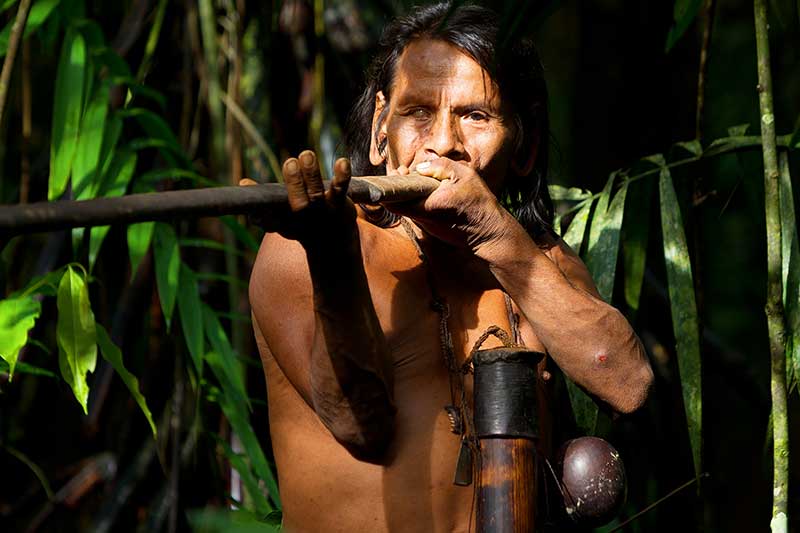
Amazon Rainforest: People & Threats (Grades 5-9)
Video length: 15:05 minutes.
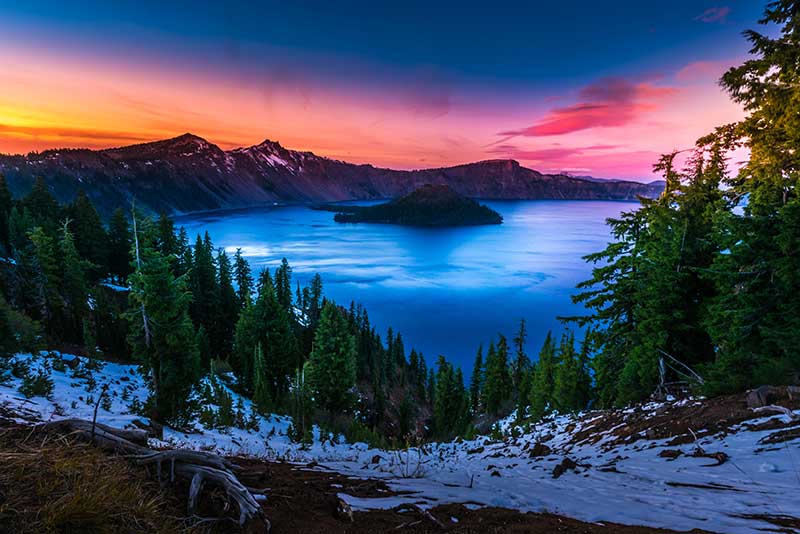
National Parks - Washington, Oregon, Idaho, Montana, Colorado
Dramatic glacier-covered rugged mountains, a temperate rainforest, craggy rock-towered coastlines, giant sand dunes, ancient cliff dwellings, and steep sheer rock canyons. All of these landscapes, their history, and more are explored in this tour of the National Parks of the northern part of the Western region.
Video length: 27:05 minutes
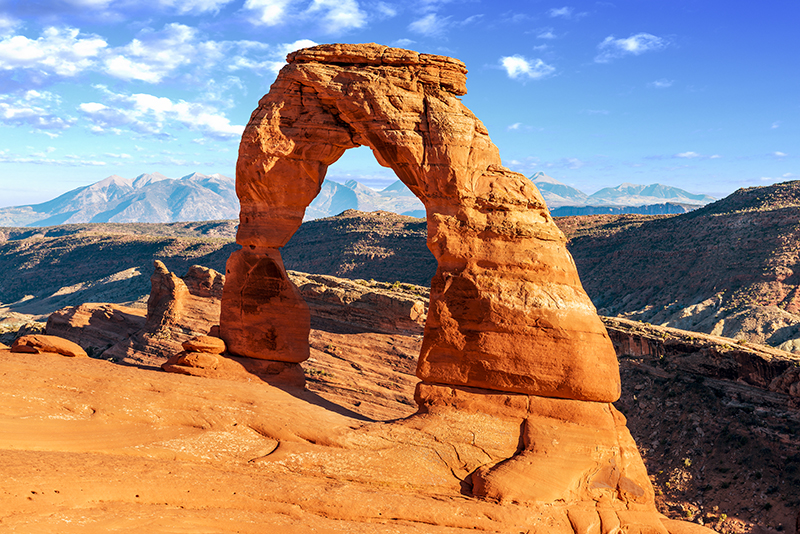
National Parks - Wyoming & Utah
Introduce your students to the magnificent landforms throughout the National Parks in Wyoming and Utah. In Wyoming, we’ll gaze in wonder at the drama of the Grand Teton Mountain Range, as we also find out about fault-block mountains. We’ll contrast that experience with the ever-moving, always-changing landscapes of Yellowstone N.P. including the “Old Faithful” geyser. Moving on to Utah, we’ll compare and contrast 3 National Parks – Bryce, Zion, and Arches National Parks. We’ll see how erosion and ancient salt beds have created these wondrous sites.
Video length: 22:40 minutes
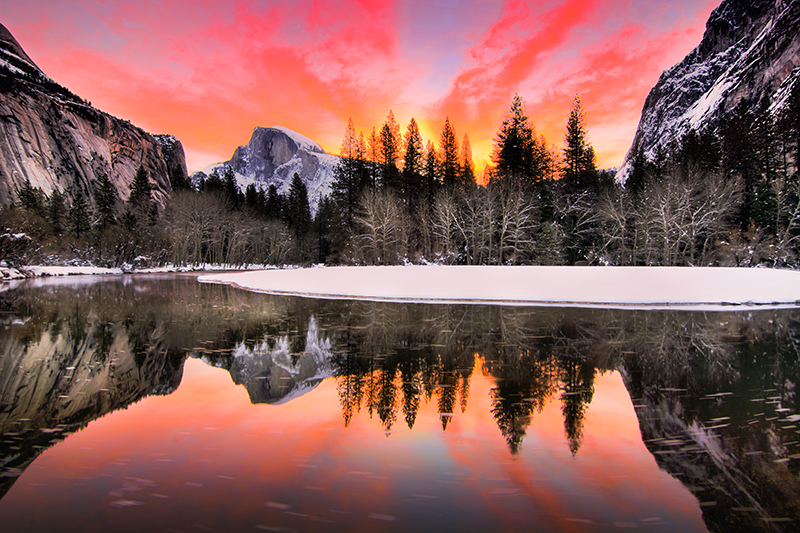
National Parks - California & Nevada
Come along as we visit Nevada’s one and only National Park – Great Basin. Then, we move on to visit 5 parks in California, comparing and contrasting along the way. Joshua Tree and Death Valley demonstrate high desert vs. low desert landscapes and conditions. Sequoia and Redwood NP’s show us the difference between trees that are gigantic in circumference vs. height. Lastly, we visit one of the crown jewels of National Parks – Yosemite N.P.
Video length: 17:20 minutes
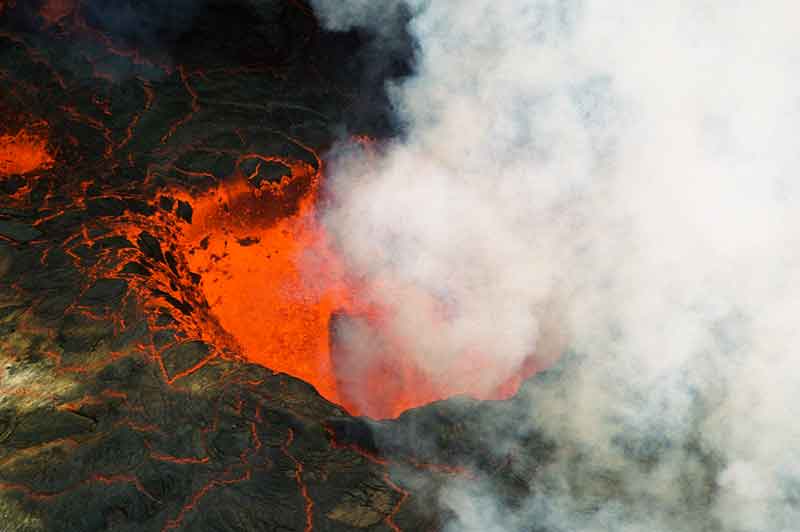
National Parks - Alaska & Hawaii
The running theme of this video is “extremes”, and there are many in both Alaska and Hawaii! We explore the beautiful and stark wilderness of the parks in Alaska, learn about glaciers and fjords, see some grizzlies and humpbacks, and end off with the volcanoes of Hawaii. A thrill ride for all!
Video length: 23:20 minutes
La Selva Amazonica (Spanish)
Presénteles a sus alumnos los estratos de la selva y los animales que la habitan. Explore las adaptaciones desarrolladas a lo largo del tiempo para lograr la prosperidad de la vida en la selva.
Video length: 19:20 minutes
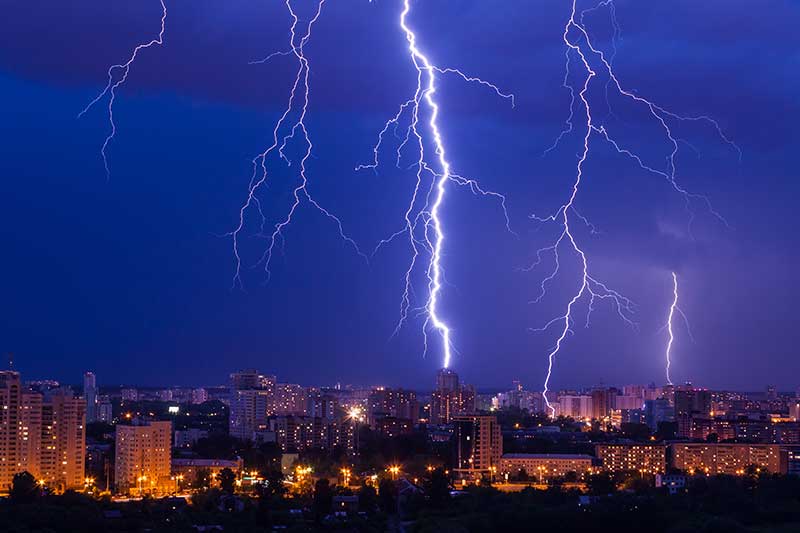
Grade 1 - The Earth Around Us
Video Storyline : People live in communities, where change happens every day. Around us we see a variety of land and water types which have helped to create our natural resources. We can also see changes around us throughout the four seasons.
Video length: 8:10 minutes.
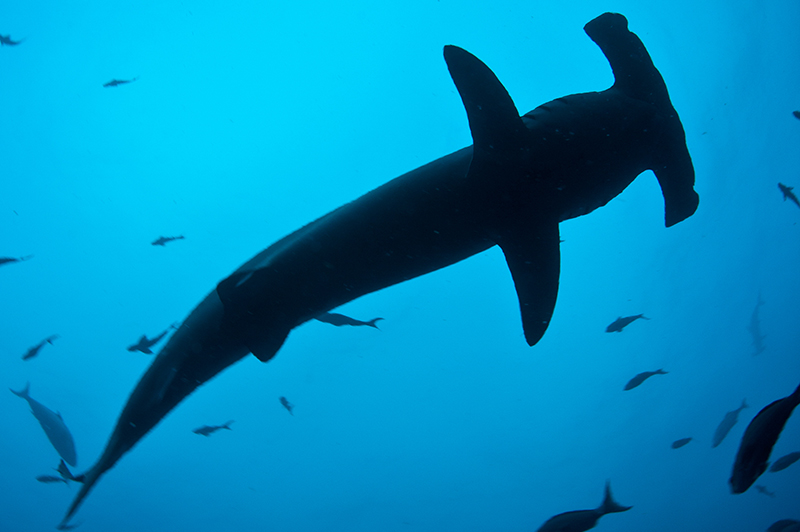
Galapagos Islands (Spanish)
Absolutamente únicas y encantadoras, las volcánicas Islas Galápagos proporcionan una cautivante aventura zoológica diferente de cualquier otra. Iguanas marinas pastando en el fondo del mar, pinzones vampiro, tortugas gigantes y muchos otros animales proporcionan unas vistas fascinantes de la adaptación y la supervivencia en este ambiente hostil y de otro mundo.
What Else Would You Like To See On This List?
Join Our List!
Get our Promo Codes, classroom ideas, latest video news, and more!
Join the thousands of your fellow educators who are already on our list.
You've successfully signed up!
Pin it on pinterest.
Ecosystem Exploration
Take a field trip to field stations and marine laboratories around the world and discover the processes that shape the world around you.
Choose one of the terrestrial, freshwater or marine videos. On each video page, you will find:
- An Ecosystem Video where researchers take you on a guided, but unnarrated, tour of their study site.
- Explorer Guides that help you explore the video as you build your powers of observation and identify processes that shape ecosystems. Sites followed by * have a full set of educational materials.
Search Results:


Virtual Field Trips
A collection of virtual field trip resources designed for instructors to lead online trips and to improve in-person field experiences.
Virtual Field Trips (VFTs) take a variety of forms based on the goals of particular courses and the teaching style of instructors. Here at Stanford Doerr School of Sustainability Field Education, we are producing VFT resources that can be flexibly used in a variety of different ways. We distinguish between virtual field sites, self-guided virtual field trips, and virtual field exercises.
Although these virtual resources were jump-started to address the current needs for online learning, these resources will also be useful situations in which in-person field trips may not possible. They can also be used to augment in-person field experiences, provide better accessibility and improve inclusivity. They prepare students, making trips more efficient, safe, and effective.
These are all in progress, with more features, trips, and topical resources being added regularly. Please contact Ryan Petterson with feedback and suggestions. For Stanford University instructors, if you are interested in collaborations, creating new VFTs for your own local area, or would like to talk about ways of incorporating this content in your teaching, please reach out as well.
Virtual Field Site (VFS) These are “bare bones” VFTs that provide the most flexible experience. They are virtual spaces that can be used for nearly any type of experience, just as the real field site would. They have basic informational content, like maps and a virtual compass. The subject matter content (geology, ecology, forestry, etc) can be presented by an instructor via synchronous lectures, instructor guided tours, or through instructor created field guides and exercises. These can be particularly useful for exercises where students are learning to make their own observations in the field.
Self-Guided Virtual Field Trip (SGVFT) These are virtual experiences that can act as stand alone interactive environments. They contain various informational components, including pop-up text, labels, or videos. As such, they are specific to a topic and may not be suitable for instruction outside of that topic. Since they are intended as self guided experiences, they may lack the engagement, interactions, and social motivations of instructor guided experiences, but they are a great alternative when students are in different time zones or when scalability is critical. These are also useful for course advertising and preparing students for in-person field experiences.
Virtual Field Exercises (VFE) These are examples of exercises that could be used in conjunction with the virtual field trips provided here. These include asynchronous student exercises for making observations, reading maps, or even creating geologic sketch maps. These examples will work best when preceded by synchronous instructor guided introductions to the virtual field site.

Stanford Conservation Program - California Tiger Salamander
A tour of the Stanford Conservation Program 's work to protect California tiger salamanders—a species listed by the Federal and State Endangered Species Acts. This conservation work and this tour take place on Stanford’s main campus, specifically at Lagunita and the Dish Area.
Possible topics: endangered species management, urban ecology, conservation, population monitoring, herpetology, Lagunita, Stanford’s local ecology
Transcript for the tour audio .

Pebble Beach at Bean Hollow State Beach, CA

Death Valley, CA

Aotearoa New Zealand
A series of collaborations between University of Auckland and Stanford University, showcasing coastal geology and volcanology around Auckland and the North Island.
Credits: James Muirhead (UoA) , Ryan Petterson (Stanford)

Chalfant Quarry - CA
A pumice quarry north of Bishop, CA. Part of a series on the Bishop Tuff. This is STOP 13, in the USGS Geologic field-trip guide to Long Valley Caldera, California .

Aeolian Buttes, CA
Part of a series on the Bishop Tuff. A collection of rock outcrops just north of the Long Valley Caldera, overlooking the Mono Basin.

Chalk Bluff - CA
A small site on on the edge of Pleasant Valley, near Bishop, CA. Part of a series on the Bishop Tuff. This is part of STOP 14, in the USGS Geologic field-trip guide to Long Valley Caldera, California .

Devil's Gate (White Mountains, CA)
A narrow canyon filled with structurally complex exposures of the Reed Dolomite.
Possible topics: faulting, folding, sedimentary structures, entrenched stream


May Lake (Yosemite NP)
A short hike to a classic Sierra lake. Offers striking views of the glaciated peaks of the Yosemite National Park, as well as metamorphosed sediments that were likely transported from the Mojave!
Possible topics: lodgepole pine forests, glaciation, granite batholiths, metamorphism, xenoliths, tectonics
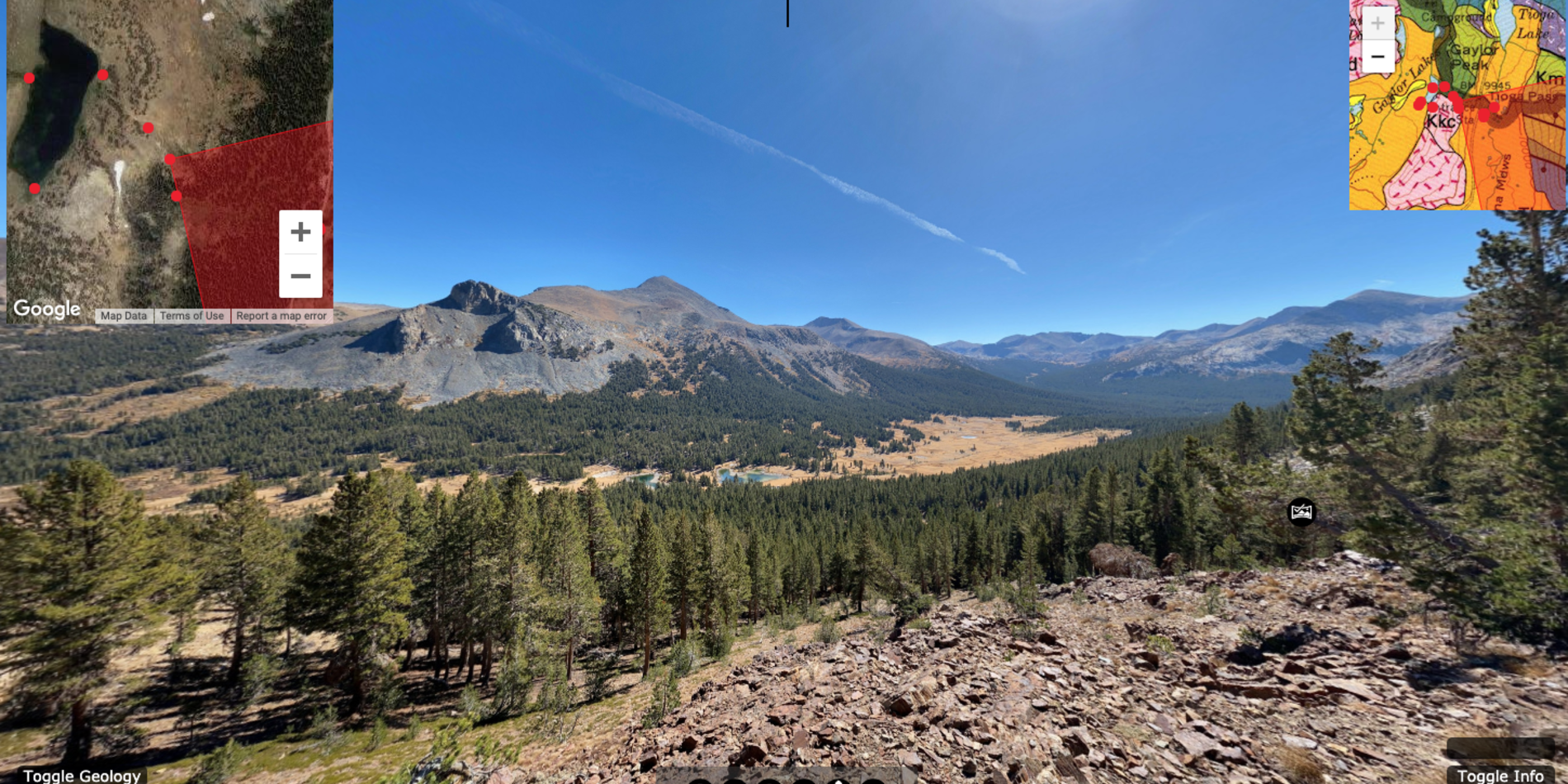
Gaylor Lakes (Yosemite NP)
Possible topics: glacial history, kettle ponds, metamorphic rocks, batholithic margin

Horseshoe Lake
This short VFT takes you to an area near Mammoth Mountain, CA where CO2 seeping into the soil due to subsurface magma has killed a large area of trees. For more details see the USGS Long Valley Caldera Field Guide - Horseshoe Lake .

Sierra Nevada (Yosemite NP)
This virtual field site covers some highlights of the Sierra Nevada Mountains and Yosemite National Park along the CA 120 Highway.
More details about the geology of the park can be found in " The geologic story of Yosemite National Park ," from the USGS .
Possible topics: glacial history, regional tectonics, volcanism, metamorphism, petrology.

Long Valley Caldera
An iconic location in the Eastern Sierra region of California. This VFS covers a large area in and around the Long Valley Caldera, with specific stops for the Bishop Tuff and several post-caldera eruptions. Field guides and other information about the geology can be found at USGS - Long Valley Caldera .
A Field-trip guide to Long Valley Caldera is also available as a PDF for free from USGS .
Possible topics: volcanism, regional tectonics, Bishop Tuff, Mammoth Mountain

McGee Creek
Possible topics: glacial history, geomorphology, faulting, regional tectonics

Heritage Grove, Sam McDonald County Park, CA

Pinyon-Juniper Woodland (White Mnts, CA)
A short trail through a Pinyon-Juniper woodland in the White Mountains of California. With some rocks in there too! (you might even see some ghost ooids!)
For more information about Pinyon-Juniper woodland, check out this article series from the National Park Service .

Stanford Dish
This Stanford Dish VFT is part of a collaboration for GEOLSCI 42: Moving and Shaking in the Bay Area . This VFT includes videos and other content specific to that course. Its a good example of how these VFT can be tailored to more specific needs.
The Dish at Stanford is generally open to the public for personal visits. Please be sure to check https://dish.stanford.edu/ for up to date times and restrictions. Any off-trail activity or educational tours must be authorized and approved prior to the activity ( application here ).
Credits: C. Baden, G. Hilley, R. Petterson, A. Steelquist

Marloes Sands, Pembrokeshire, UK
Silurian sediments and intercalated volcanic units on the Pembrokeshire coast, UK. This tour provides examples of variable depositional environments, and unconformable contacts between and within volcanic and sedimentary units, in subvertical strata.
Possible topics: sedimentary rocks, igneous rocks, deformation structures, depositional environments
Collaboration with Dr. Katy Chamberlain , University of Derby

Topography Exercise
This virtual exercise is an example of how a VFS might be used. It is an exercise designed to get students familiar with locating themselves on a topographic map, using bearings and topographic features. This exercise is designed to be used with "The Dish" SGVFT and a Google Jamboard.
Collaborators

Jump to main content

Secondary navigation
- Join (It's Free!)
- Submit Data
- Submit Data Online
- Download Offline Data Entry Program
- Explore Database - Create Reports
- Geographic Zone Codes & Maps
- Publications - See How REEF Data Have Been Used
- Experience Levels
- Golden Hamlet Club
- Great Annual Fish Count
- Monitoring Projects
- REEF Surveyor Toolbox
- SMILE Project
- Invertebrate and Algae Monitoring
- Interpreting REEF Data
- Snorkeling Surveys
- Pay Registration Fee
- Complete Waivers
- About Lionfish Derbies
- Past Derby Results
- Host a Sanctioned Derby
- Collecting & Handling Workshops
- Lionfish Jewelry Workshops
- Lionfish Resources
- Report a Nonnative Species Sighting
- Become a Program Sponsor
- Publications
- Research Components
- Spawning Videos
- Collaborators and Funders
- Grouper Moon The Next Phase Documentary by Guy Harvey
- Grouper Moon Education Program Resources
- Internship Description
- Application
- Interns Present and Past
- Funding Opportunities
- Ten Reasons to be a REEF Intern
- Marine Conservation Fellows Program
- Leadership Intern Program
- Intern Alumni Network
- Program Overview
- Upcoming Field Survey Trips
- 2026 Trips Preview
- Schedule Archive
- About and FAQs
- Trip Leader Bios
- Educator Credit for Participation
- Upcoming Fishinars and Fishy Hours
- Archive Directory
- Full Listing - past and upcoming
- Quizzes of Common Fish and Invertebrates
- Quizlet Study Decks
- Regional ID Facebook Groups
- Discovery Programs
- Expeditions
- Virtual Field Trips (gr. 3-8)
- Virtual Case Studies (gr. 9-12)
- Program Topics
- Interest Form
- Policies & Rates
- Frequently Asked Questions (FAQs)
- In-person and Virtual Programs
- Education Advisory Panel
- Educator in the Field Fellowship
- Livestream With Your Class
- Educator Resources
- Workshop for Educators
- Teacher Credit Opportunities
- Using REEF Database as an Educator
- Monthly e-News -- "Making It Count"
- REEF Notes Newsletter Archive (1994-2007)
- REEF-in-Brief eNews Archive (2005-2007)
- Press Releases
- REEF in the News
- Join - It's Free
- Why Become a Member
- Volunteers of the Year
- REEF Ocean Ambassadors
- 'Ocean Unity' Garden Display
- Memorial Donations
- Monthly Giving REEF Guardians
- Honorary Donation
- Employer Matching Companies
- Donor Recognition Levels
- Oceans for All Fund
- Gallery of Paul Humann Limited-edition Prints
- Gifts of Stock
- Planned Giving - Legacy Society
- Shop to Support
- Raise Money for REEF
- Symbolic Animal Adoption
- Vehicle Donation
- Cause Marketing
- Sponsorship Opportunities
- Conservation Partners
- Corporate Partners
- What is REEF?
- Mission, Vision, and Programs
- Financials and Transparency
- Get Email Updates
- 2023 Impact Report
- 2022 Impact Report
- 2021 Impact Report
- 2020 Impact Report
- Staff Directory
- Board of Trustees
- Interpretive Center and Campus Description
- Facility Rental Information
- Events at REEF Interpretive Center
- Speakers Bureau
- REEF COVID-19 Events Policy
- My Dashboard
- Listing of Upcoming Events
- Lionfish Derby Series
- Fish Out of Water Virtual 5K
- Arts & Science Festival
- Underwater Photography Contest
- Great Annual Fish Count Events
- Public Events at REEF Interpretive Center, Key Largo
- REEF Fish & Friends - monthly seminar series
- Fishinars - remote learning
- Into the Blue Book Club
- Conservation Challenge
- REEF Field Survey Trips - Dive Vacations That Count!
- About - Schedule, Location, FAQs, and more
- Registration
- Diving, Snorkeling, Kayaking
- Social Events
- Conservation Activities
- Sponsors and Supporters
- Silent Auction and Raffle
- Locations and Maps

Ocean Explorers Virtual Field Trips
Bring your classroom to life with reef’s ocean explorers virtual field trips.
This program is an interactive field trip simulation that includes engaging lesson plans and activities to give students experiences and connections to the marine environment without leaving their classroom. Students have the opportunity to explore what life is like as a marine scientist, performing exploration tasks and creating research trials as they complete field journals and become citizen scientists themselves.
Each session is adaptable and can be modified to be taught in-person at school, off-site in the field, or entirely online in a virtual format. REEF Scientists will guide your students through the field trip, allowing for minimal preparation on the teacher's end. The virtual field trips curriculum follows the 5E lesson structure: Engagement, Exploration, Explanation, Elaboration, and Evaluation. By following this structure, the programs are designed to supplement a teacher's classroom curriculum easily.
Click here for FREE Lessons
Program Information Implementation Guide and FAQ
Take your students on an exciting field trip with REEF to the sunny, salty Florida Keys and experience life as a scientist!
Begin your Ocean Explorers Virtual Field Trip today! Sign up on our Registration Page and receive your materials to start your adventure. To learn more about the virtual field trips, visit our Program Information page or email [email protected].
Thanks to the generosity of REEF members and donors, at this time, groups can participate in the program at no cost. Expenses associated with the program are supported through REEF’s Oceans for All Fund. The Ocean for All Fund is a pooled scholarship fund supported by businesses, foundations, and individuals committed to investing in a more equitable future for marine conservation. This fund promotes inclusive opportunities for people to connect with, enjoy, and learn about the underwater world. REEF uses the fund in partnership with established organizations. It directly provides both in-person and online programs, ensuring that cultivating connections with the ocean is not limited by zip code. The Oceans for All Fund reduces barriers that restrict participation in REEF’s programs. To learn more about the Oceans for All Fund, visit our webpage .

Virtual Field Trips
If a trip on the Marine Science Floating Lab is not possible, students can still explore the world of the ocean with our Virtual Field Trips . Without leaving the classroom, students can see what lives in the ocean and discover why it is important for all of us to take care of the marine environment.
Each Virtual Field Trip focuses on one of the activities that students participate in when they are on board the Floating Lab, which has been operating since 1974 through the Los Angeles County Office of Education.
Each Virtual Field Trip contains:
- a video – Each activity video is approximately 13 minutes long, but using the built-in pauses will extend the length and allow students to interact with the content.
- student worksheets – Handouts have students record and analyze data from the onboard experiments and identify the marine organisms they see.
- post-video activities – One or more activities can expand the content of the Virtual Field Trip video.
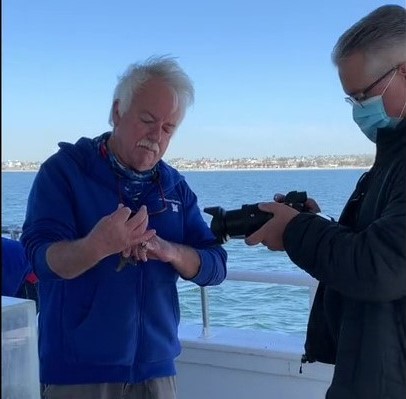
Register or Login for Free Access to All
Register Login
Teacher Instructions
The Teacher Instructions provide guidelines for presenting the Virtual Field Trip videos and indicate alignment with the Next Generation Science Standards.
Introduction and Wildlife Observation
Get an overview of the Floating Lab activities with this brief 5-minute video for both teachers and students. As the boat motors through the harbor, students can look for and record the various marine wildlife encountered.
Plankton, the base of the food chain, is collected and then viewed under an optical microscope. Students learn about and identify phytoplankton and zooplankton and discover plankton’s importance to the health of our environment.
Fish and Invertebrates
A trawl net is towed behind the boat to collect a representative sample of fish and invertebrates. Students discover the morphology and adaptations of some of the sea creatures brought up in our net.
Bottom Sediment
After a special device “grabs” sediment from the ocean floor, students examine the sediment’s characteristics as well as the organisms that live in this benthic zone of the ocean.
Water Clarity, Color, and Temperature
Using scientific equipment, students measure the clarity, color, and temperature of the water in the harbor. Then they determine why tracking these characteristics is important.
© Think Earth Environmental Education Foundation. All rights reserved. Permission is granted to teachers and other not-for-profit users to download and use the instructional materials and videos. No portion of the videos or other materials may be copied and used for any commercial purposes.

Tahoe Environmental Research Center

Virtual Field Trips
Virtual field trips are currently FREE as either live virtual sessions facilitated by TERC educators or as pre-recorded videos and activity guides. Please click here to submit a field trip request form to schedule a live field trip or to gain access to all the materials for a pre-recorded field trip. ( https://tinyurl.com/TERCVirtualFieldTripRequest )

Tahoe's Aquatic Food Web
(Grades 3–5, one 1-hr session) Students explore changes in our local Lake Tahoe aquatic food web. As a pre-field trip activity, students learn about a specific Tahoe organism and use that knowledge to construct a food web live with their peers using Google Jamboard. Students work together virtually to create an accurate food web model to demonstrate its complexity and use the model to discuss the many impacts from a single change. NGSS: MS-ESS3-3, MS-ESS3-4

Trees of Tahoe
(Grades 3–5, two 1-hr sessions) Students learn how to identify the common tree species found in Tahoe’s forests. They get to practice and apply these skills by performing a forest survey to assess the local biodiversity. Students then use their survey to determine the health of Tahoe’s forests. Trees of Tahoe is a simplified version of the Forest Health field trip geared toward younger students. NGSS: 3-LS4-3, 3-LS4-4

Formation of Lake Tahoe
(Grades 4–6, three 1-hr sessions) Students are taken on a broad journey of the geological processes that formed Lake Tahoe over millions of years. Through several hands-on demonstrations, students explore big-picture earth science topics such as density, plate tectonics, and earthquakes, and make the connection of how those actions over time led to the formation of Lake Tahoe.
NGSS: MS-ESS2-2, MS-ESS2-3, 4-ESS1-1

Forest Health
(Grades 5–6, two 1-hr sessions) Students will explore and identify common tree species found in Tahoe’s forests. Students then have the opportunity to practice and apply these skills by performing a forest survey that provides insight into the biodiversity of trees around them. They will learn about the main factors that affect forest health and ecosystem dynamics and will use this knowledge, and their collected data, to assess the health of Tahoe’s forests. NGSS: MS-LS2-4, MS-LS2-5

Climate Change at Lake Tahoe
(Grades 6–8, one 1-hr session) Students start with an active and engaging lesson that discusses ways to combat climate change from a personal to global level. This is followed by an evidence-based exploration into how our changing climate affects Tahoe specifically. The field trip is designed to give students the information they need to understand the implications of this global catastrophe while empowering them to get involved! NGSS: MS-ESS3-3, MS-ESS3-4, MS-ESS3-5
Brief Descriptions of Virtual Field Trips
Jump to content
- Toggle Menu
Common Searches
- What majors and minors are offered?
- Where can I find information about graduate programs?
- How much is tuition?
- What financial aid packages are available?
- Where can I log in to SSU Online?
- Faculty & Staff
- Administration
- Divisions & Departments
- Strategic Plan
- Sustainability
- Degree Programs
- Colleges & Schools
- Academic Calendar
- Academic Support
- Advising Central
- Schedule of Classes
- Experience SSU
- How to Apply
- I Have Applied
- Financial Aid
- Student Fees & Charges
- Seawolf Living
- Clubs & Organizations
- Campus Recreation
- Associated Students
- Fraternities & Sororities
- Culinary Services
- Things to Do at SSU
- About the Area
- Seawolf Calendar
- Social Media Feeds
- Insights Magazine
- Campus Updates
- For News Media
- Green Music Center
- Box Office Tickets
Virtual Field Trips
The virtual field.
Take yourself or your students on field trips to ecosystems around the world.
The Virtual Field takes you to field stations and marine laboratories all over the globe to learn new skills as you explore nature.
The Center is leading and collaborating on The Virtual Field , an international coalition of 50 field stations and marine laboratories that creates virtual field experiences. Learning experiences for virtual visitors of all ages and backgrounds include:
- Curriculum for K-8, High-School and University.
- Curriculum for High-School and University.
Get started at The Virtual Field .
Why take a Virtual Field Trip?
Field experiences in undergraduate research boost motivation, critical thinking and academic success for students of all backgrounds and disciplines. Yet due to logistical and financial barriers, these experiences are limited to only a small proportion of students. Virtual field experiences are one way to remove these barriers.
History of the Virtual Field
The Virtual Field emerged from a grassroots effort by the Organization of Biological Field Stations during the Covid-19 pandemic, and is led by Claudia Luke Center for Environmental Inquiry at Sonoma State University, along with Hilary Swain at Archbold Biological Station, and Kari O’Connell of the STEM Research Center at Oregon State University. It was made possible thanks to a foundational National Science Foundation grant.
Please contact us if you are interested in working on The Virtual Field - as a volunteer, faculty, student, or donor.
Dr. Claudia Luke Director Center for Environmental Inquiry Sonoma State University 1801 East Cotati Avenue, Rohnert Park, CA 94928 707-536-8915 (mobile) [email protected]
Recycling the land, revealing the future.

- Alliance Mission
- Annual Report
- Park Partners
- Donors + Sponsors
- Support the Park
- The Park Plan
- Design + Construction
- Landfill Engineering
- Public Review
- Landfill-to-Park Timeline
- Group Tours
- Field Trips & Virtual Presentations
Interactive Map and Virtual Tour
- Studio + Gallery
- Art Projects
- Scientific Research
- Education Program
- Media and Special Event Application
- Selected Press
- Opportunities
- Freshkills Park en Espanol
Virtual Field Trips + Presentations
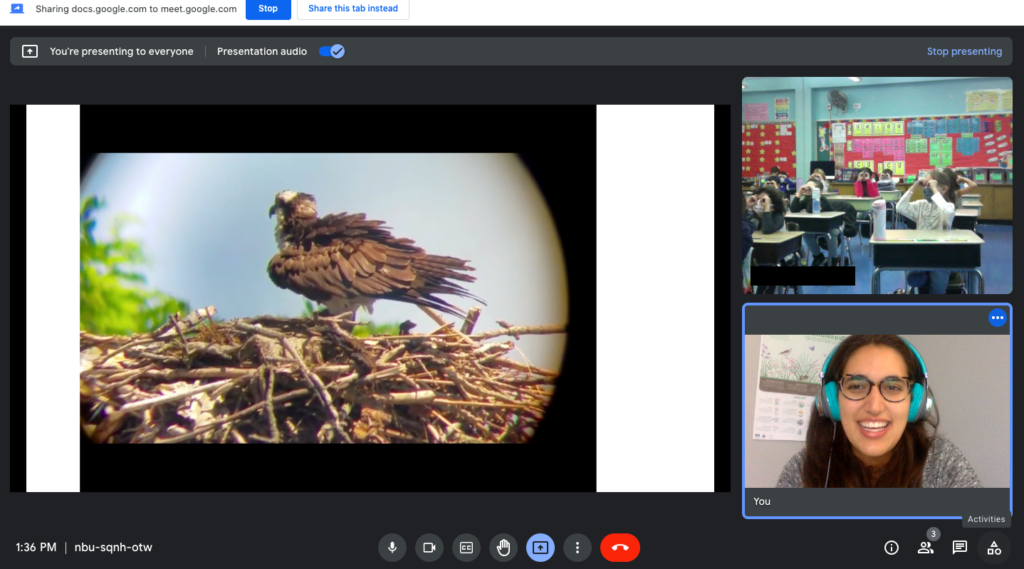
The Freshkills Park Education team is pleased to offer virtual field trips and presentations for classes and groups who are not able to visit the landfill-to-park transformation in person. Our virtual education programming focuses on sustainability, waste management, grassland and wetland ecology, park development, and environmental restoration and is aligned with New York State science standards. Our virtual programming is flexible, and we are happy to work with you to adapt the content to your students.
All virtual programs are free of charge, though groups are encouraged to make a donation to the Freshkills Park Alliance. Contact [email protected] with any questions.
To plan a tour:
1. Request a tour using this link .
2. We will confirm your tour by e-mail within 2 weeks.
3. Prepare for your tour:
- Welcome to Freshkills Park Virtual Trip Guide.docx
“ Thanks for your wonderful presentation that opened our students’ eyes to the problem of waste management within NYC and beyond. A few students made it a point to tell us that it was the highlight of the week for them.” -High School Teacher
“The mix of video, VR, photos and a live demo was PERFECT. It felt like a true experience and not just another powerpoint…Thank you again — I had parents tell me that this was the best trip! “ -K-5 Science Teacher

Education Home Page + In-Person Field Trips + Classroom Resources + Group Volunteer Projects + Grassland Education Project + Mobile Lab
- « Grassland Education Project
- Group Volunteer Projects »

Get Involved
- Make an Art Proposal
- Submit a Research Inquiry
- Press Inquiries
- Freshkills Park Blog
Freshkills Park Project Partners

Website generously sponsored by:

Stay Connected
- Email Newsletter
Site designed and developed by Social Ink [+]
Join our Mailing List
Subscribe to our mailing list.
Our work: Digital Learning
Virtual Field Trips
Digital field trips offer unique affordances to expand access to locales, capture sense of place, and foreground agency within an experiential learning environment.
The Virtual Field Trips program develops tools and learner-centered frameworks to create and co-experience navigable worlds via immersive, 360-degree photos and videos.

Virtual field trips (VFTs) can take a variety of forms, but at their core, they enable learners to engage with a location, often without physically traveling there, in a digitally mediated way. VFTs can broaden access to locations and experiences and may help mitigate inequities due to cost, accessibility, or inclusivity. Advances in technology have reduced the barriers to creation, opening opportunities for educators and students to become content creators, embedding concepts in locally or personally meaningful contexts.
The science and design behind how to structure activities to create engaging and effective virtual field trips is lagging behind technology growth. Virtual field trips have the potential to support learning by increasing learner connectedness, whether to the land, to a phenomenon, or to other people. This program aims to explore and promote the use of virtual field trips for supporting meaningful learning.
Faculty leads

Dan Schwartz
The Halper Family Faculty Director, Stanford Accelerator for Learning and Faculty Director, Digital Learning Initiative

Bryan Brown
Professor, Graduate School of Education
Research team
Kristen Pilner Blair
Director of Research, Digital Learning Initiative
Keith Bowen
Director, Learning Design Challenge
Catherine Chase
Research Director, AI + Education
Senior Research Scholar, Graduate School of Education
Social Science Research Professional, Graduate School of Education
Ryan Petterson
Director of Field Education, Doerr School of Sustainability
Ana Saavedra
Postdoctoral Scholar, Graduate School of Education
Joe Sherman
Digital Media Producer, Graduate School of Education
Kendra Sobomehin
Doctoral Candidate, Graduate School of Education
Reuben Thiessen
Project Management Specialist, Stanford Accelerator for Learning
Wilson Wang
Assistant Director of Data Science & Cloud Architecture, Graduate School of Education
Director of Digital Learning Solutions, Graduate School of Education
Rachel Wolf
Social Science Research Scholar, Graduate School of Education
Anna Queiroz
Postdoctoral researcher, Communication
How virtual field trips work
Virtual field trips offer unique affordances to expand access to locales, capture sense of place, and foreground agency within an experiential learning environment.
Resources for educators
Helping Students and Educators to Create VFTs
The Stanford Accelerator for Learning is developing resources and frameworks to support practitioners and learners to create and share their environments through virtual field trips.
We are finding that engaging with and creating their own virtual field trips can help students see science as more relevant to themselves and their communities, and support rich learning opportunities. In collaboration with elementary, middle, and high school teachers and informal educators, we are developing lesson plans, templates, models, and guides to support effective creation and sharing of virtual field trips.
Developing Science Instruction Modules for Teachers
Our team works to create, study, and share models of virtual field trips that educators can integrate into their curriculum, advancing rich and responsive science education. We are developing and studying ways virtual field trips can be incorporated in to science curriculum, including:
- Next Generation Science Standards-aligned modules that can be incorporated into high school classes
- Modules for teaching college-level geology that will be empirically tested at Stanford and made publicly available to instructors everywhere.
- Models of integration with in-person field experiences to reduce anxiety when used as preparation and support feedback when used post trip.
Funding opportunities
To catalyze Stanford’s interdisciplinary expertise to advance research, creativity, and implementations of virtual field trips as a way to provide rich digital experiences that go beyond traditional “textbook” content, we fund VFT research and design projects.
To date, we have funded 14 proposals representing 6 of Stanford’s 7 schools. Through this work we are developing a community within Stanford interested in advancing learning through virtual field trips, and we are learning about new models for teaching and assessing with virtual field trips in domains ranging from ecology to civil engineering to music.
The Science and Design of Virtual Field Trips
Explore a virtual field trip.
Fourth grade students from High Tech Elementary North County created a virtual field trip to teach others about the geology of their local county parks. Click the blue arrows to explore.
Stay connected
Join our email community to get updates delivered right to your inbox.
Boobytrap Label
Want to learn more about our newsletter before signing up?
Read past issues here →
Join our community
- Prepare for Back to School - Propel growth and light the path towards a brighter future. Learn More

- Integrations & Access
- Content Partners
- Science Techbook
- Mystery Science
- Pivot Interactives
- DreamBox Math
- DreamBox Reading Park
- DreamBox Reading Plus
- Social Studies Techbook
- Augmented Reality
- Professional Learning
- Career Connect
- Research & Impact
- Success Stories
- Leadership Blog
- Courageous Leaders
- Implementation Toolkit
- Discovery Educator Network (DEN)
Virtual Field Trips
- Educator Blog
- Puzzlemaker
- On-Demand Training
- Back-to-School Readiness
- Career & Technical Education
- Teacher Retention
- Supporting Literacy
- Education Funding
- About Corporate Partnerships
- Our Corporate Partnerships
- Join our Network
- STEM Careers Coalition
- Corporate Partnerships Blog
No permission slips required! These virtual events let educators take students to amazing places and give them remarkable experiences, without ever leaving the classroom.
Featured and upcoming virtual field trips.
Join us for our Virtual Field Trips or watch them on-demand after their premieres. Each no-cost Virtual Field Trip comes with a companion guide packed with standards-aligned, hands-on learning activities! Select one of the options below to register.
On-Demand Virtual Field Trips

- Grades 6-12
- School Leaders
Enter to win 10 books for your classroom 📚
3 Incredible Science Field Trips That Don’t Require Permission Slips
Perfect for grades 3–8; watch them in your classroom, any time!
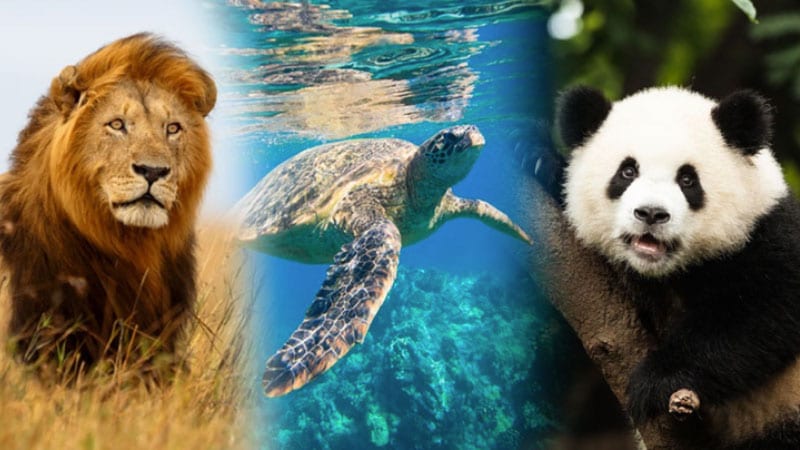
Want to take your students on a virtual field trip? You’re in luck! Check out these incredible, free trips from Nature Works Everywhere .
Can you imagine what it would be like to see a giant panda cub climbing a tree in China? Or watching a giraffe gallop through the grasslands in Kenya? My students would be enthralled. There’s something magical about letting them experience a place far, far away, where they can learn not only about the animals and their homes but also about science and geography.
Below are three virtual field trips we can’t get enough of. Watch these 45-minute videos with your class—any time! They’re perfect for grades 3–8, and each includes a teacher’s guide packed with discussion questions and more. Check them out below.
1. The Deserts and Grasslands of Africa
Head to Africa with scientist Charles Oluchina, where you’ll discover the importance of grasslands and learn how ecotourism in Kenya has benefited both people and wildlife. Students will see giraffes, lions, and elephants; the footage will make you feel like you’re on safari! You’ll also visit Burkina Faso and learn how one farmer invented an ingenious method to help restore forestlands that had been lost to desertification. Get a sneak peek below and then watch the full virtual field trip here .
2. China’s Great Forests: What the Giant Panda and Earth’s Climate Share
Do you know what a takin is? It’s a goat-antelope found in the eastern Himalayas. You’ll get to see some, along with golden snub-nosed monkeys and giant pandas, when you go on a virtual field trip to China’s forests. Expert scientist Yue Wang will explain the role forests and mountains play in the carbon cycle and climate change, and students will get a better understanding of just how important habitats are for both people and animals. Watch the full field trip here .
3. The Coral Reefs of Palau: Nature’s Amazing Underwater Cities
Underwater cities—sounds intriguing, right? The coral reefs of Palau, a network of islands in the Pacific Ocean, are just that. Dive into the water and explore the colorful reefs. Students will learn about the interconnected ecosystem built on symbiosis, where diverse organisms have evolved to protect, clean, nourish, and even mimic one another. It’s spectacular! Watch the full field trip here .
Check out our Best Field Trip Ideas for Every Age and Interest (Virtual Options Too!)
You might also like.
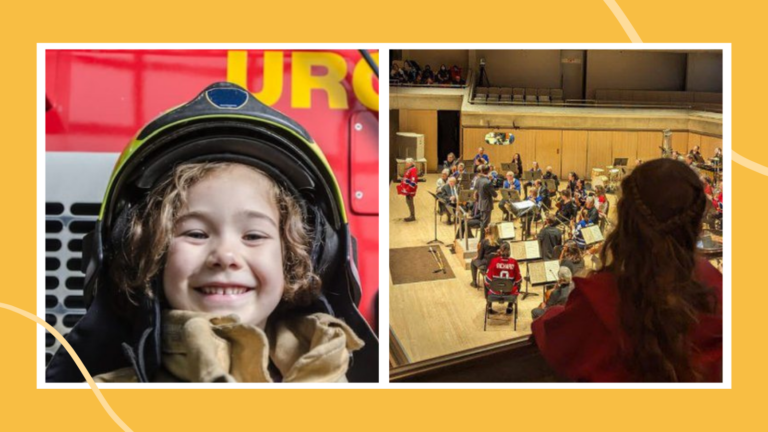
260+ Field Trip Ideas for Grades Pre-K Through 12 (In-Person and Virtual)
Get out of the classroom and explore the world! Continue Reading
Copyright © 2024. All rights reserved. 5335 Gate Parkway, Jacksonville, FL 32256

IMAGES
VIDEO
COMMENTS
Explore the World with Virtual Field Trips. Designed for ages 9-15 but customizable for all ages, virtual field trips allow students to travel the world and explore natural environments without leaving the classroom. Each virtual field trip contains a video, teacher guide and student activities.
Environmental Literacy: Marine Ecology. Please remember, for a virtual program, you need: A reliable internet connection. A laptop or computer. A computer camera, microphone, and speakers. A projector (as needed) The ability to do a Zoom conference or call-in. For more information, or to book a program, contact Karen McDonald at [email protected].
Dramatic glacier-covered rugged mountains, a temperate rainforest, craggy rock-towered coastlines, giant sand dunes, ancient cliff dwellings, and steep sheer rock canyons. All of these landscapes, their history, and more are explored in this tour of the National Parks of the northern part of the Western region. Video length: 27:05 minutes.
An Ecosystem Video where researchers take you on a guided, but unnarrated, tour of their study site. Explorer Guides that help you explore the video as you build your powers of observation and identify processes that shape ecosystems. Sites followed by * have a full set of educational materials. Please give us feedback with this 5-minute survey.
Virtual Field Trips (VFTs) take a variety of forms based on the goals of particular courses and the teaching style of instructors. Here at Stanford Doerr School of Sustainability Field Education, we are producing VFT resources that can be flexibly used in a variety of different ways. We distinguish between virtual field sites, self-guided ...
Wednesday, April 29, 2020. 1 p.m. ET / 10 a.m. PT. Watch Here: NOVA Education Facebook or NOVA Education YouTube. For our third virtual field trip, Melisa Diaz, a PhD student at Ohio State ...
Members of the Department of Earth and Planetary Sciences at Johns Hopkins University have created virtual field trips and experiences that can be used in a variety of ways and target different audiences. These resources can be used for online learning, to prepare students for in-person field experiences, to make field sites more accessible, and...
REEF Scientists will guide your students through the field trip, allowing for minimal preparation on the teacher's end. The virtual field trips curriculum follows the 5E lesson structure: Engagement, Exploration, Explanation, Elaboration, and Evaluation. By following this structure, the programs are designed to supplement a teacher's classroom ...
Each Virtual Field Trip contains: a video - Each activity video is approximately 13 minutes long, but using the built-in pauses will extend the length and allow students to interact with the content. student worksheets - Handouts have students record and analyze data from the onboard experiments and identify the marine organisms they see.
Virtual field trips are currently FREE as either live virtual sessions facilitated by TERC educators or as pre-recorded videos and activity guides. ... Tahoe Science Center Tahoe Center for Environmental Sciences 291 Country Club Dr. | Incline Village, NV 89451 775-881-7560.
The Virtual Field. Take yourself or your students on field trips to ecosystems around the world. The Virtual Field takes you to field stations and marine laboratories all over the globe to learn new skills as you explore nature.. The Center is leading and collaborating on The Virtual Field, an international coalition of 50 field stations and marine laboratories that creates virtual field ...
The Freshkills Park Education team is pleased to offer virtual field trips and presentations for classes and groups who are not able to visit the landfill-to-park transformation in person. Our virtual education programming focuses on sustainability, waste management, grassland and wetland ecology, park development, and environmental restoration ...
The science and design behind how to structure activities to create engaging and effective virtual field trips is lagging behind technology growth. Virtual field trips have the potential to support learning by increasing learner connectedness, whether to the land, to a phenomenon, or to other people. Highest priority was given to projects that ...
Free On-Demand Video Field Trips. English and Spanish. 15-20-min. segmented episodes driven by a question of the day. No prep necessary! Functional in any learning environment. Visit the California Science Center and meet our staff virtually. High-quality, grade-appropriate, engaging! Browse by grade level.
Laboratory exercises, field observations and field trips are fundamental parts of many earth science and environmental science courses. Field observations and field trips can be constrained because of distance, time, expense, scale, safety, or complexity of real-world environments. During the last decades actual field trips have been losing ...
Digital field trips offer unique affordances to expand access to locales, capture sense of place, and foreground agency within an experiential learning environment. The Virtual Field Trips program develops tools and learner-centered frameworks to create and co-experience navigable worlds via immersive, 360-degree photos and videos.
Virtual Field Trip is a computer aided module of science developed to study the Colonisation and Succession in Mangrove Swamps, ... This study was designed to develop understandings of the student process of learning during and surrounding an environmental science field trip to an outdoor setting. John Dewey's extensive writings on the ...
Featured and Upcoming Virtual Field Trips. Join us for our Virtual Field Trips or watch them on-demand after their premieres. Each no-cost Virtual Field Trip comes with a companion guide packed with standards-aligned, hands-on learning activities! Select one of the options below to register.
Watch these 45-minute videos with your class—any time! They're perfect for grades 3-8, and each includes a teacher's guide packed with discussion questions and more. Check them out below. 1. The Deserts and Grasslands of Africa. Head to Africa with scientist Charles Oluchina, where you'll discover the importance of grasslands and ...
Zeleny Bor, Yekaterinburg, Russia - Sverdlovsk Oblast: See traveler reviews, candid photos, and great deals for Zeleny Bor at Tripadvisor.
Skip to main content. Discover. Trips
The about 100m long and 20m high rock wall is impressive. It is a phenomenon, which can be found also in other places... 4. Vaynera Street, Yekaterinburg. 351. Points of Interest & Landmarks. By olegl28. Vainera street is very nice place in Ekaterinburg. Now it is only walking street with many stores for wonderful...
Virtual Reality club -entertainment for the whole family. Fly! Fight orcs or zombies! try skies jumping and many more. Read more. Duration: 1-2 hours ... 0.1 mi Speciality Museums • Science Museums. Memorial to Kommunards - Heroes of Revolution and Civic War. 1. 0.1 mi Monuments & Statues. Grinvich. 139.